The greatest cellist you never heard
OrchestrasSteven Isserlis pays tribute to Daniil Shafran, who was born 100 years ago this week but was confined to the Soviet zone of Europe.
DANIIL SHAFRAN – born 13th January 1923
A personal memoir on his centenary:
by Steven Isserlis
I first became aware of the genius of Daniil Shafran when I was about 12 years old. My teacher, Jane Cowan, gave a talk about great cellists; towards the end of the evening, she played an excerpt from (I believe) Shafran’s recording of Schubert’s Arpeggione Sonata with Lydia Pecherskaya. I was immediately ‘hooked’ – what a sound! What elegance! What charm – and what mastery! Shafran became my hero, and I talked of little else (I was an obsessive). But the trouble was that he never appeared in person in the West, and his recordings were almost all unavailable – only that recording of Schubert and Shostakovich with Pecherskaya and (a bit later, I think) his performance of Kabalevsky’s 2nd concerto, coupled with Grutzmacher’s mishmash of a concerto in Bb based on themes by Boccherini, were to be found. This lent to Shafran’s art the aura of deep mystery that sealed my obsession.
It was frustrating! But help was at hand: my father’s work as a metallurgist occasionally involved visits from foreign scientists; and on one occasion he brought a Russian lady to visit us (my father was born in Odesa, so Russian was his first language). I told this lady about my admiration for Daniil Shafran, complaining to her about the impossibility of finding his recordings; I begged her to send me anything she could find – and she sweetly promised to try. In the event, she was as good as her word; for the next few years, I would receive every so often a package from the Soviet Union, sent by this lady. The excitement of it! A large parcel (this was the days of vinyl, of course) hailing from a different country – a different planet almost, it seemed – addressed to me in London. I have no idea now who this lady was – but her kindness changed my life. These records became my greatest treasure!
I particularly remember hearing for the first time his performances of Tchaikovsky miniatures with his first wife, the pianist Nina Musinyan, and of the suite on folk themes written for him by Sulkhan Tsintsadse. Sheer magic! Every note he played sounded so unlike any other cellist – any other musician, for that matter. (In later years, when I became friends with Ivry Gitlis, he would say that he felt that he and Shafran were somehow close, musically; but the two men never met.)
Every day I would listen to one of my Shafran discs forcing my friends and family to listen as well. Soon we had quite a Shafran fan-club in our house! The only problem was that I was becoming so obsessed with his playing that I was imitating it in my own playing; instead of finding my own voice, I was trying to copy his. My teacher regretted having introduced me to him! Eventually, I accepted her anguished criticism, and stopped listening to him; his influence remained (and remains) strongly with me, but I tried consciously to avoid imitating his style – which was, of course, quite unique to him.
So it was with some trepidation that I decided after a few years that I was past the dangers of imitation, and it was safe to enter Shafran’s soundworld again. I was worried that I would no longer be entranced, that my earlier fascination would be dimmed. I needn’t have worried! As soon as I heard that velvety, passionate sound again, I was hooked again as ever – and remain so to this day (hence this article!). I found also that I felt an immediate bond with other admirers of his playing. With two great pianists who became close friends of mine, Olli Mustonen and Stephen Hough, an early sign that we were going to be get on well was the discovery of our shared admiration for Shafran – it felt as if we were fellow-members of a secret society!
Shafran was still a far-off figure, however (and, of course, he never played in London); although I persistently asked all manner of people with connections to the Soviet Union, nobody that I met seemed to know him. (My only success in that endeavour was to discover that two cellists I knew, who had both studied with Rostropovich in Moscow, had heard Shafran in concert; neither liked his playing – so it really wasn’t a success after all. In fact, one of them, on discovering that I was such a fan, told me that I needed to see a psychiatrist!)
I dreamed of meeting and hearing the great man. When I made my first tour of the Soviet Union, in 1984, I was very disappointed to find out that he was away on tour; I was doubly frustrated when I saw a poster advertising a concert by him to be given about two weeks after I had left Moscow. My second tour for Gosconcert (the state agency) was in 1987; and this time I was luckier. I persuaded the magazine ‘The Strad’ to give me a letter saying that they would like me to interview Shafran; this seemed to be my best chance of meeting him – and it worked! I remember sitting absolutely transfixed as our (horrible) interpreter called him at home to fix up the meeting; she addressed him as Daniil Borisevich, and assured him that it was all above board, that the powers that be at Goskoncert had signalled their approval. The interview was arranged to take place at the House of Artists in Moscow. We arrived early, and waited in the front hall. Suddenly, I saw a figure whom I had only seen on record covers (perhaps only one record cover, in fact – Soviet discs didn’t usually feature artists’ photos). My heart thumped as I approached him. ‘Mr Shafran?” I enquired in what I’m sure was a quavering voice. And so I was introduced to my hero. He was slightly smaller than I’d imagined, neatly-dressed and coiffured – little hint in his appearance of the passionate artist that he was. I was slightly taken aback also by the amount of gold teeth he sported; but this was the Soviet Union, after all. We talked for about an hour; he was very polite, careful, guarded (even though times were changing, there was no question of him criticising the Soviet authorities, of course – especially In the presence of the thoroughly suspicious interpreter). I can’t say that I got to know him at all well, but it was still thrilling – just to sit and talk with this great figure in my life, to find out that he really existed! And people seemed happy with the interview when it appeared.
I still longed to hear him play live; but it seemed that this would never be. The next time I was in Moscow, in 1989, he was again away; and thereafter, with the collapse of Gosconcert, many years were to elapse before I returned to Russia. One day, however, Olli Mustonen and I were at my home in London, watching a wonderful video of Shafran that I had been given (by then I had amassed a huge library of his recordings, both audio and video); as we raved, I lamented the fact that I would never hear this amazing man playing live. Olli thought for a moment – and then came up with a brilliant idea: ‘Why don’t we invite him ourselves?’ And, in an alarmingly short space of time, events were in motion: Olli’s then Finnish agent, Tuula Sarotie, had managed to contact Shafran; I had contacted the Wigmore Hall and found a suitable date (as well as an opportunity for him to record a recital for the BBC), and had arranged for a British agency to manage the concert; and the well-known instrument dealer and owner of a distinguished record label, Peter Biddulph, had agreed to co-sponsor the concert with Olli and myself. Soon, everything was fixed for Shafran’s first London concert for thirty years! The only major thing left to be decided was the programme; Shafran had immediately suggested (through the agency that had replaced Gosconcert – or maybe it was still called Goskoncert- I forget) that he play, with his regular partner Anton Ginzburg, Brahms’ E-Minor Sonata, his own arrangement of Shostakovitch’s Viola Sonata, and the Cesar Franck Sonata.
Although I loved to hear Shafran playing a wide variety of music, I’d always felt that he was uniquely at home in Russian works; and I felt that British audiences would be enthralled to hear him in that repertoire. So I requested that perhaps, instead of the Franck Sonata, he could play, say, the Arapov Sonata (also written for him – he made it sound like a masterpiece) or even the Prokofiev Sonata. I had quite a lengthy exchange of faxes with his agent, Viktoria Muravieva, about the various programme possibilities. Finally I received a fax from her with a message from the great man himself: ‘Maestro Shafran has a new idea for the programme. He suggests the following: Brahms E-Minor Sonata, Shostakovitch Viola Sonata, Franck Sonata.’ Chuckling, I agreed.
So finally came the day, in May 1995, for his recital. By coincidence, I was away in Finland playing with Olli when Shafran was scheduled to arrive in England, so I arranged for a driver-friend of mine to meet him at the airport, and for my parents to invite him, his Madame Svetlana Shafran, and Anton Ginzburg to their house for dinner two nights before the concert. Rather to my surprise, Shafran accepted the invitation. I left my parents strict instructions to call me in Finland as soon as dinner was over; they did so, reporting that it had all been a great success, Russian conversation flowing easily between my father and the Shafrans. (They also said, though, that Anton Ginzburg had sat in rather miserable silence throughout the meal – I don’t think it was easy being Shafran’s musical partner!) The absolute highlight of the evening, I heard, was when Shafran tasted my mother’s sherry trifle, a very English dessert; he had loved it, requesting several helpings! His wife, Svetlana, had taken the recipe, and Shafran had made her promise to learn how to make it for him in Moscow. (Later, I read in his biography that Svetlana continued to serve it to him on special occasions for the rest of his life.)
I was home in London only just in time for the Wigmore Hall concert. There had been, not surprisingly, a lot of interest in the recital, and it had sold out weeks in advance. An air of excitement reigned in the packed hall, full of cellists and others who were familiar with his recordings, as the lights went down – what would he sound like live? For myself – I was terrified! All these years I had waited to hear my hero – and now it was about to happen; furthermore, I felt responsible. I was as nervous as if I had been playing myself. I need not have worried; from the first notes of the Brahms, Shafran turned all our pre-conceptions on their head, both musically and technically. Everything was utterly different from anything we had heard before – it was riveting. (Even his manner of coming onstage was unique; he went straight to the far wall, and touched it – a properly superstitious Russian!) It was true that, now in his seventies, he was not the perfect virtuoso that he had once been, and some aspects of his playing had become more exaggerated with the years; but the sound, the imagination, the warmth were all as winning as ever. Particularly memorable were the 9 encores (a Shafran tradition), each a gem. All in all, it was an unforgettable recital, and was received with huge cheers and ovations (also for the wonderful support of Anton Ginzburg). As a cellist friend of mine put it after the concert, it was as if a sole member of a lost tribe of cellists had suddenly, unexpectedly turned up in our midst.
Afterwards, I went back to the artists’ room, stood in line to say hello to Shafran – and suddenly my nerve failed me! I turned away, too scared to approach the great man. Luckily, my father was standing nearby, and knew that Shafran wanted to see me; so he took me to him and re-introduced me. Shafran gave me a huge bear-hug, and we became, to my joy, friends. Afterwards, we went out to dinner with a large group of people, mostly musicians; and I think that I can honestly say that it was the only time in my life that I forgot to eat my dinner, so eager was I to observe Shafran in relaxed mode, to catch his every word! (Of course, I could not understand enough – I cursed the language barrier; but either through my very basic Russian or through others’ translation, I caught a lot.) At one point, referring to his constant, unique use of the left-hand thumb, I told him that the next morning any cellist who had been at the recital would wake up feeling that they’d gained an extra finger! He laughed. ‘God gave us five fingers,’ he replied. ‘So why shouldn’t we use them all?’
I saw him only once more after that. A year later, someone else arranged another Wigmore Hall recital for him at a time when I had to be away (to my chagrin). I was to be at home a couple of days before the concert, though, so I wrote to the Russian agent some time before the planned trip asking if by any chance the Shafrans would like to come to our house for dinner that night. Reply came there none, however, and I forgot about it. On that day I returned from a foreign trip to find my wife Pauline in quite a state; she had just received a phone call asking at what time the Shafrans should arrive! So it was panic stations all around. In the end, though, it was a memorable evening, Pauline coming up with a lovely meal, and the Shafrans making all the right noises about our son Gabriel. Again, here was a dream come true! The hero of my youth – and still my hero – in my home, meeting my wife and son; despite the language difficulty, it was a truly memorable evening. Of course, I had no idea when he left that I would never see him again; it seemed more like a beginning than an ending. (Pauline, at least, was able to go to his recital – and loved it.)) But I’m glad that my final memory of him is a happy one: as the evening advanced, he looked at his watch, and decided that it was time to leave. He was staying in quite another part of town, with the cellist Leonid Gorokhov – a long way away from my place; so he asked me to order a taxi for him. Shafran’s English was almost non-existent, but his German was good. He enquired whether the taxi driver would speak German. I laughed; no, London mini cab drivers do not tend to speak German, I told him. Shafran looked at me doubtfully. A few minutes later, the bell rang, and there was the cab driver. Shafran bounded into my front hall. ‘Sprechen sie Deutsch?’ he inquired. ‘.Ja, ein bissen,’ replied the driver. Shafran gave me a memorable look – of COURSE he speaks German, said that look. And out he and the wonderful Svetlana went, cheerful and charming to the last.
After that, I was very happy to help to arrange for him to play at the Huntington Festival in Australia, run by my friend Richard Tognetti; but very sad to know (in retrospect) that it was to be his last concert. As Svetlana said, when I visited her in Moscow shortly afterwards in their small apartment on the outskirts of Moscow, ‘he left us too early’. I feel privileged to have known him, and only wish that it could have been for longer; and I was very happy later to meet his lovely daughter Vera, and her daughter Nastya (whom I immediately, and accurately, I felt, rechristened ‘Niceia’).
As a cellist and musician, Shafran was unlike anyone else. At a time in which, thanks to various media, musical styles are converging, Shafran’s voice remained apart. His vibrato, his phrasing, his rhythm all belonged to a unique whole; his astounding virtuosity conveyed effortlessly a huge musical personality that retained the passion, the simplicity and the poetry of a great Russian folk singer. He was incapable of playing one note insincerely; his music spoke from the soul. We are fortunate to have recordings that, I am sure, will keep his memory alive for as long as people love to listen to music.
For those who don’t know Shafran’s playing – and perhaps for some who do – I have compiled a list of some recordings on YouTube that I think give a good overview of his playing.
Perhaps it is best to start with little pieces, since his art shone so clearly through these – the elegance, the warmth, the astonishing technical ease, the truly Russian (not Soviet!) soul. Here are a few gems:
https://www.youtube.com/watch?v=rd5QCpllR4w… – Tchaikovskys Melody (from the first disc the lady sent me from the Soviet Union – I gasped with joy when I heard it.)
https://www.youtube.com/watch?v=DmVrH6-e-rA… – Debussy’s Minuet
https://www.youtube.com/watch?v=h0rr-_IRHw4… – Ibert’s Little White Donkey
https://www.youtube.com/watch?v=TwTKanmFKTM… Boccherini’s Rondo
And then an original cello piece:
https://www.youtube.com/watch?v=ZyVjnm9yVbw… – the slow movement of the Rachmaninov sonata.
Shafran had the amazing ability to take a piece that in other hands would have sounded second-rate, and to play it in a way that transformed it into a masterpiece. There’s no better example of that than in his recordings of the two Kabalevsky concertos (the second having been written for him):
https://www.youtube.com/watch?v=kHy3oSVBP90… – No 1
https://www.youtube.com/watch?v=eURlo8Gpi6o… – No 2
I can’t say, personally, that I always felt close to his interpretation of the ‘classics’ – but there was in every performance something so special, and convincing, about his approach, that it proved irresistible. Here are a couple of good examples; I know they may not be for everyone (I am sometimes shocked by how cellist friends, whose opinions I respect, reject Shafran’s playing – well, it’s their loss, I feel); but everything he played is worth hearing:
https://www.youtube.com/watch?v=XmPGO5r99gY…
(Bach gamba sonata no 1 – Shafran worshipped Bach, of course, and had, not surprisingly, an entirely individual approach to his music. Here he plays with harpsichord, which I think works surprisingly well, his crisp articulation mingling satisfyingly with the harpsichord’s. Incidentally, he also had a special affection for the music of Vivaldi, which he thought was a perfect antidote for the troubled world we inhabit.)
https://www.youtube.com/watch?v=u8BAAwGNyFk&t=34s… – (Chopin sonata – such a striking performance of a work that can all too often sound incomprehensible.)
As I said above, I do feel that some aspects of his playing became exaggerated as he got older (even though there was always so much to love). I put this down to two causes: 1) whereas many famous musicians play less well in their later years because they get complacent and stop practising enough, in Shafran’s case I believe that, with his relentless perfectionism, he actually practised too much – it can have a negative effect; and 2) because, for mostly political reasons, he was prevented from travelling regularly outside the Soviet Union, and because he didn’t play chamber music, he only rarely interacted with other major musicians – at least non-Russian ones. So it’s a particular pleasure to be able to hear (thanks to the indefatigable ‘Shafran collector’ on YouTube) him in two of his collaborations with great artists:
https://www.youtube.com/watch?v=ShH_7GcZSXc… (the Dvorak concerto in Vienna with Carlo Maria Giulini and the Vienna SO – Shafran mournfully told me that he’d asked for a copy of this video, but that the TV station had said it would cost him 2000 euros!)
https://www.youtube.com/watch?v=Vz2ou96eQIg&t=1104s… (Beethoven’s sonata no 3 in A, with Carlo Zecchi – apparently the two met only at the session.)
And so on…
If you catch the Shafran bug from these videos/recordings, I predict that you’ll want to explore further. There are so many gems – a whole host of short pieces, plus the Arapov sonata, the Tsintsadse suite, Prokofiev’s Symphony-Concerto, several recordings of the Shostakovich sonata (my favourite being the last, with Ginzburg), and many, many others. Enjoy!
And I hope that Shafran is now in heaven, cello in hand, enjoying a thoroughly vibrant eternity!

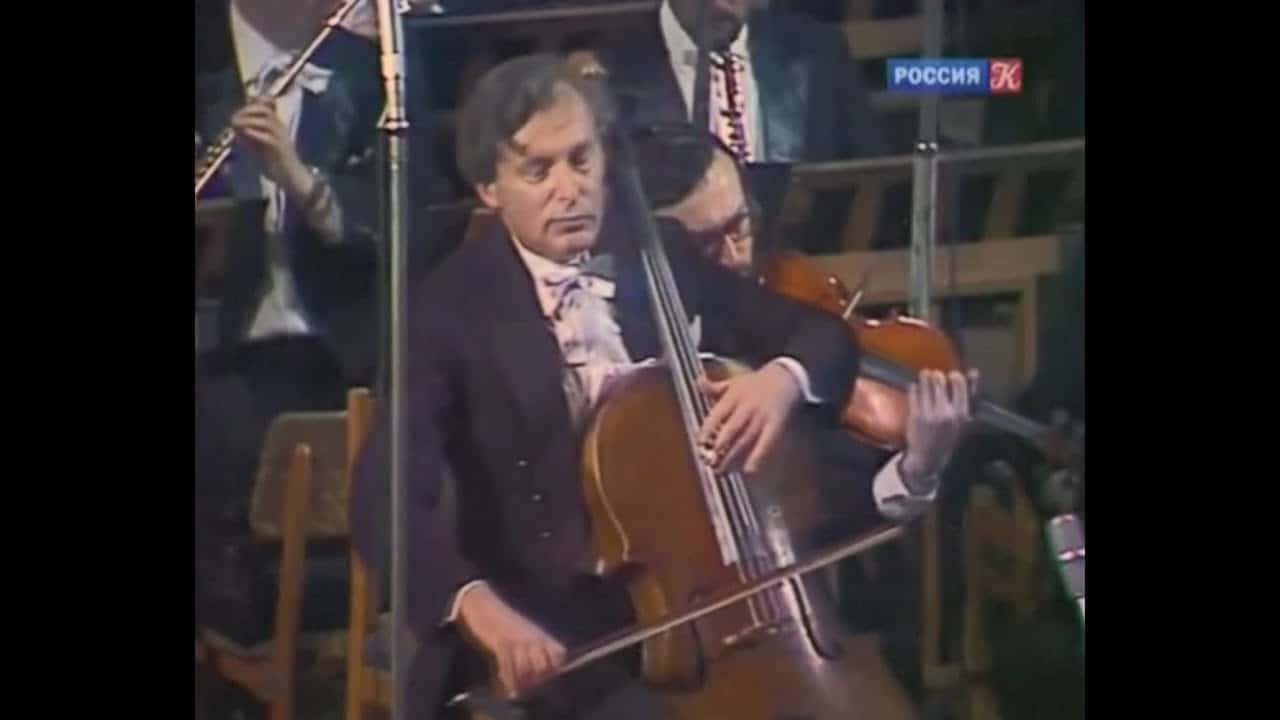
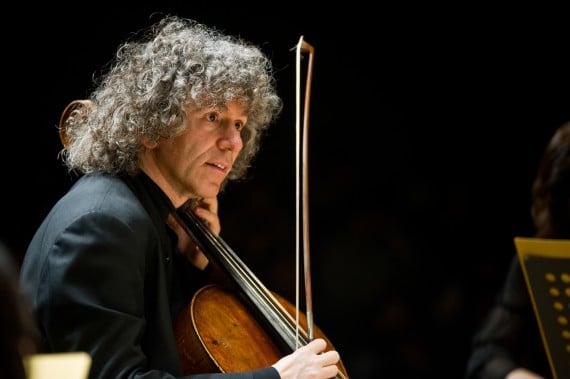
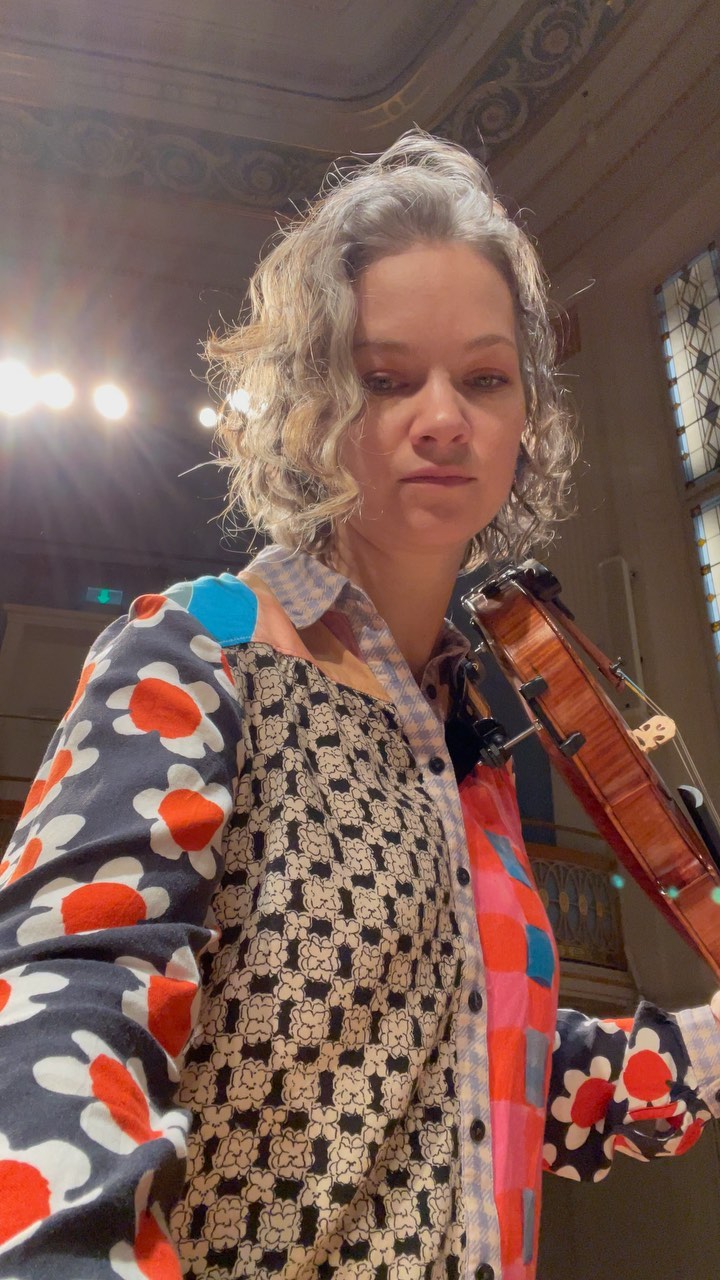

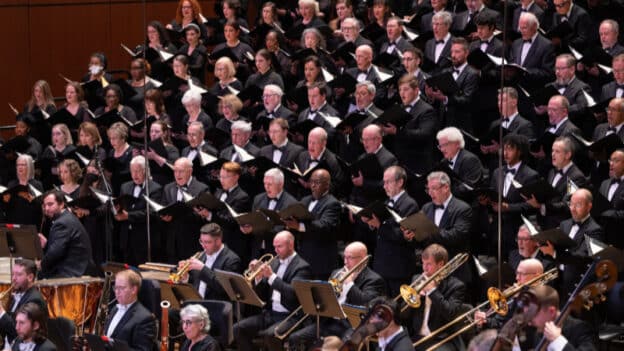
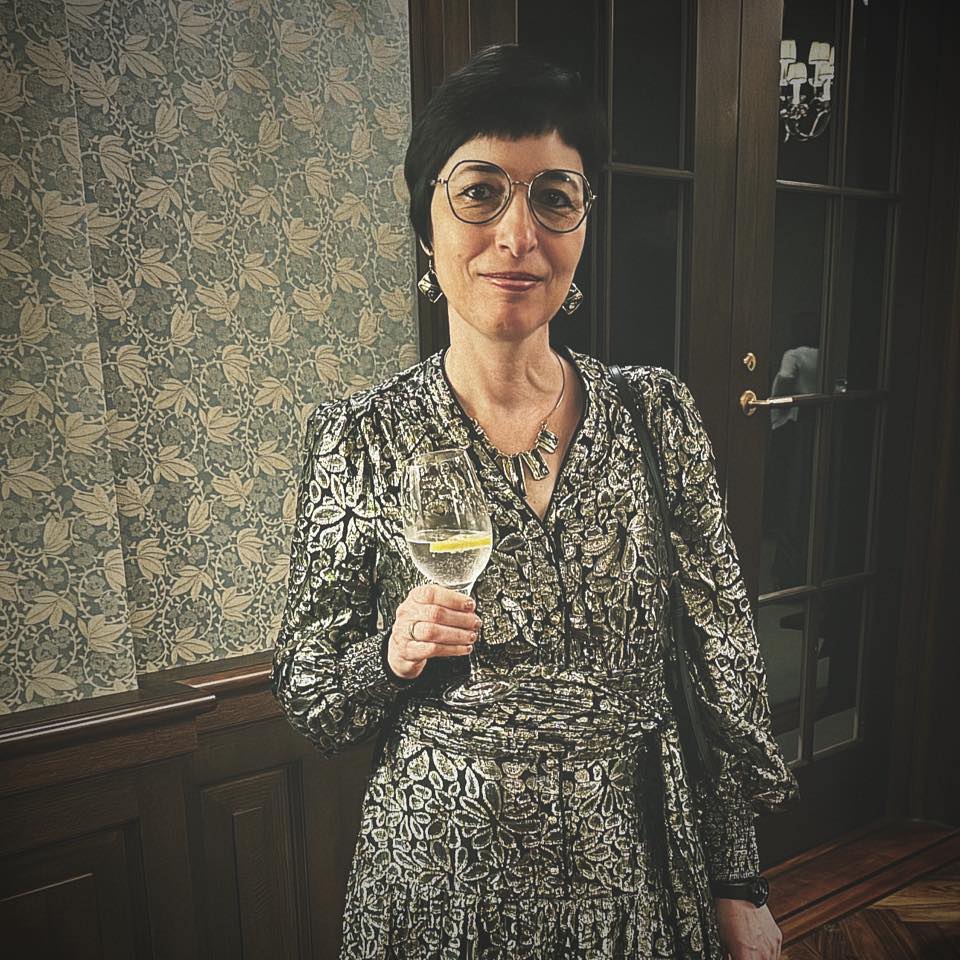
My aunt had an old Melodiya Shafran LP of the Bach Suites that I wore out as a teenager. Magnificent player.
I’m listening to them now. For the first time. (YouTube Music). Amazing. You knew.
Reading such honest and sincere praise of a fellow musician reminds me what a wonderful fraternity the professional musical world can be.
Maybe you hadn’t heard him before, Norman, but I (and I suspect many others who read your blog) have long been well familiar with his work, through recordings.
I do not know if he ever gave concerts in the US.
Isserlis’ memoir of him is marvelous, BTW.
A heartfelt tribute to a great cellist. Daniil Shafran’s Arpeggione sonata alone would have made him immortal.
A fine tribute from Steven Isserlis.
Shafran was known in the U.S. via recordings. Kabalevsky’s 2nd cello concerto was written for him in 1964, and I still have the Melodiya/Angel LP. The cover art is striking, and the record jacket gives a good account of Shafran’s career to that date.
I think that Shafran recognition problem is due to the fact that he lived under the shadow of his “larger than live” contemporary giant Rostropovich, just like Leonid Kogan, and to some extent Emil Gilels, lived under the shadows of Oistrakh and Richter, respectively.
I sense that artists for whom an anti-communist narrative can be constructed got more attention in the West than the ones who were fine with it.
The Strad magazine hardly ever mentions the name Shafran. It’s a shame that only Rostropovich dominated the West’s idea of cello playing for decades—as Janos Starker and Shafran were the superior musicians (and cellists).
Shafran has the most identifiable characteristics, for better or worse. He was fluent in playing a string instrument, not merely a good technician. Sure, his playing had flubs here and there but that made his performances all the more exciting. Hearing him in Vienna in the ‘70s remains the most memorable performance I ever attended. His presence was human, while his music-making was superhuman.
Dear Gerry,
if it would be of interest to you, I wrote a larger article about Shafran for The Strad in 2021 (September issue).
Best regards
O.
Thank you for reminding me of this article. After subscribing to Strad for nearly 35 years, it was the first time I can remember seeing DS’s name on the cover and the only article I can remember about him. His recordings get no mention, and his cello playing has probably been mentioned three or four times in the past 33 years. The Strad lines up with the major record labels, it seems.
It’s a pity what the magazine has become in the past twenty years ago. The focus is largely on young players and products. The articles are not nearly as informative as they were in the 1980s or mid-90s, and noticeably less dense on the page. I hardly see anything worth reading anymore; The Strad has become what Strings Magazine was, and now Strings is nothing more than a catalogue with tidbits here and there: “So [famous player] tell us about balancing your career with having a baby” to “Your new Mozart album features three concertos. Tell us about your next plans in the kitchen” and “Wow, you performed for 10000 people in China! Tell us, did you have good dumplings there?” I suspect this will be The Strad in about five to eight years.
Thank you, again, for writing a good article on a most important artist. I hope more articles like this can be written instead of “The marvels of fine tuners: Pandora’s latest collection”
Thank you, Steven, for this wonderful article. He is my hero, too.
This is a fantastic piece! Thanks a lot for sharing it!
This is so good. I hope people read every word. Thank you, Mr. Isserlis for giving this to us and to Mr. Lebrecht for publishing it. It really made my day.
Why “never”? I did hear him once in a solo recital in early 1970s when he was still in his prime. The one piece that was particularly memorable for me was Franck’s Sonata. My impression was that he was a highly romantic interpreter and that his bowing technique was almost “violinistic” rather than purely “cellish”. He was certainly an outstanding and remarkably idiosyncratic musician. His misfortune was probably to grow up at about the same time as Mstislav Rostropovich in the same country, and being Jewish (unlike MR) in that situation immediately placed Daniil Shafran in a very distant second position as a “Soviet” solo cellist – therefore no prestigious tours abroad and none of the other perks, however limited, enjoyed by the country’s leading soloists. By the way, Shafran and Rostropovich participated in international competitions “against” each other twice – 1949 Budapest and 1950 Prague – and both times they shared the first prize. We all know which one of them soon became a world renowned superstar and who remained relatively unknown except among a few particularly passionate groups of fans.
Shafran was a polarizing figure, more so than any serious classical musician I know. No question that he was a uniquely-gifted cellist; no one else would even attempt many of the fingerings he could bring off. And his sound was recognizable after just a few notes; the true signature of an artist. (Unlike many of the posters here, I heard him several times, live, in his prime.)
But to my ears, the music-making was often distorted to the point of nausea. Rhythms ignored, phrasing disjointed, passage-work smudged into glossolalia. I’m mystified that a number of superb cellists (like Isserlis) admire him, when their own playing has so much more musical integrity. We all want to have an “individual voice,” and no one’s was more individual than Shafran’s. But when the “voice” drowns the simplicity of expression that the composer sought to achieve, you get something akin to a horror movie.
Apparently all those “superb cellists” who admire DS have a view that is different from yours of what composers “sought to achieve”, and that is one of the important qualities that makes them superb.
Thank you for publishing this interesting and heart-felt account. Shafran was an artist we should have known better, but even without touring he was not entirely obscure here in the US. His account of the Boccherini Concerto (yes in an inauthentic edition which some of us still like very much) and Haydn in D, as well as the sonatas of Debussy and Franck, were available on reasonably priced LPs from Westminster, which at that time was bringing us some Melodiya items that evidently EMI did not want) and those LPs were not only commonly seen at American record stores but also received a lot of classical radio play back then.
A less well-known recording it seems was a CD that I was sent to review for Fanfare (my notes say it was published in Fanfare Vol 22 No. 1), of Bach cello Suites Nos 2 to 5, a very well filled 78 minute CD. The label was “Russian Revelation” (“a division of Telstar Records”) that brought out all manner of interesting stuff, lots of Kogan and Igor Oistrakh, often in much better sound than we had been given to believe the Soviets were capable of, but were not easily found on record store shelves regardless of how positive the reviews might have been. Revelation claimed that its recordings were live performances, which I assume meant Soviet radio tapes versus Melodiya. Their documentation was often sketchy and even negligent, but we were always grateful to have the recordings.
Shafran’s 1971 era Bach heard and reviewed in the late 1990s was something of a friendly ghost in that era of growing rigidity of opinion against “inauthentic” performance practices, rather like someone who deliberately brings an enormous roast beef to an austere vegetarian potluck dinner party, but interestingly in subsequent years some of the HIP cellists have started to (re)introduce some of that vigor of attack into their Bach playing, making one wonder if the walking on eggshells approach was a reflection of scholarship or mere technical necessity.
Shafran’s way with Bach is strongly articulated red meat and full of personality, without the feline elegance of Ma’s first recorded account for Columbia/Sony, or the cleanly oiled emotives of Rostropovich’s valedictory set for EMI. That Revelation CD is highly recommended if you can find it.
One of my musical idols . Didn’t miss any of his recitals in beautiful Small Philharmonic Hall in Leningrad with incredible acoustic .
Always sold out .
All his performances was memorable.
Couldn’t sleep at night after his concerts .
We all have musical idols as kids, but our preferences often change as we grow up, even if those idols remain sentimental favorites later in life. Sometimes one is lucky enough to have idols that turn to be timelessly great.
He played a Sarabande from Bach’ solo suites and never did I hear music as heavenly as that.
Marvellous, very personal tribute from Steven Isserlis, stirring memories of discovery, in the 70s, in a record store in NZ(!), of an “unknown” cellist: Daniil Shafran. Kabalevsky, Shostakovich and Chopin revealed in a new light. But some cellist freinds disapproved, mocking my enthusiasm, and i never heard him live…. Apart from occasional mentions over the years, the impact of this encounter faded, thus i’m so happy to have these reminiscences and appreciation from Steven Isserlis to revive and confirm my early enthusiasm. Thank you so much for sharing this.